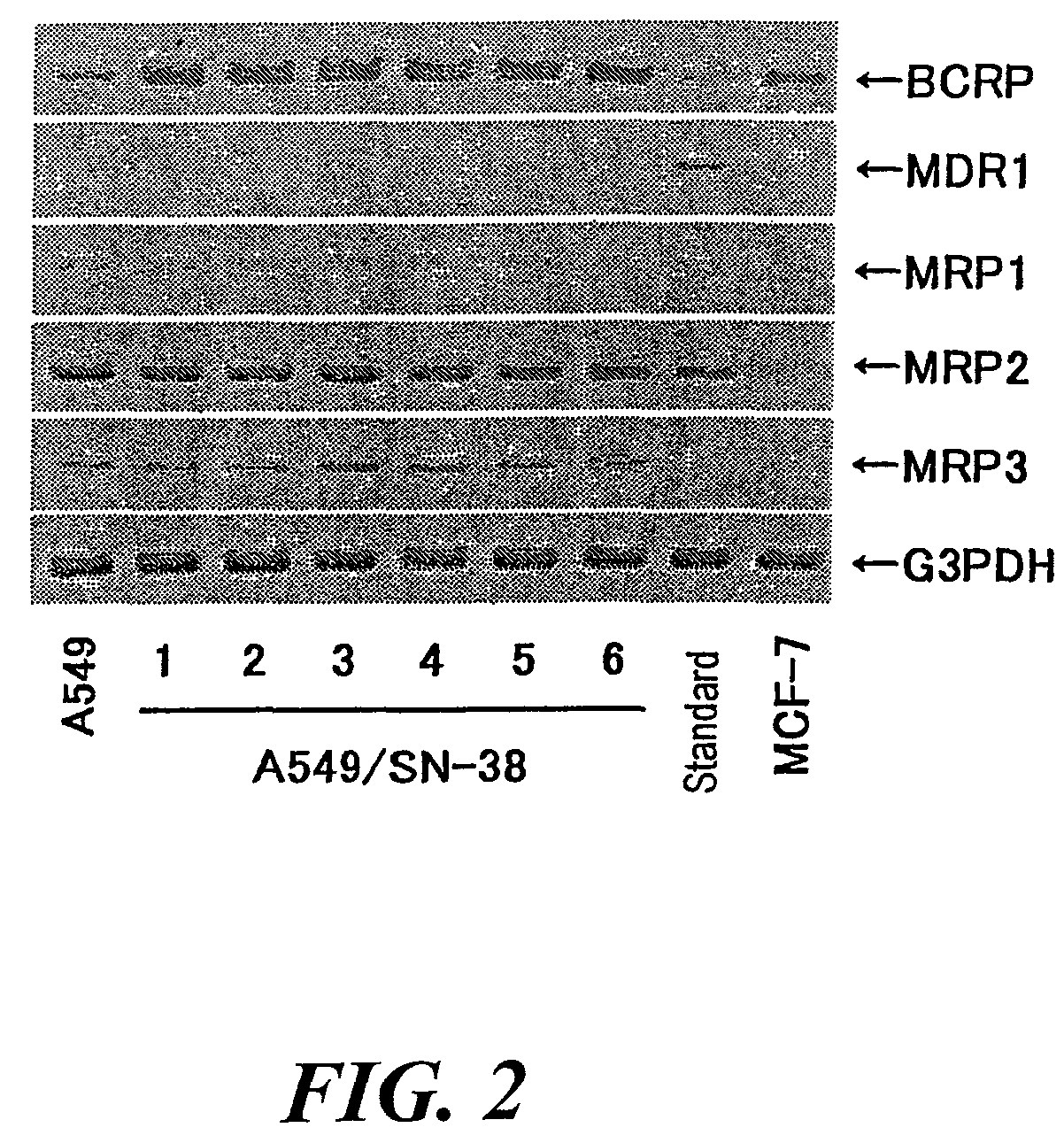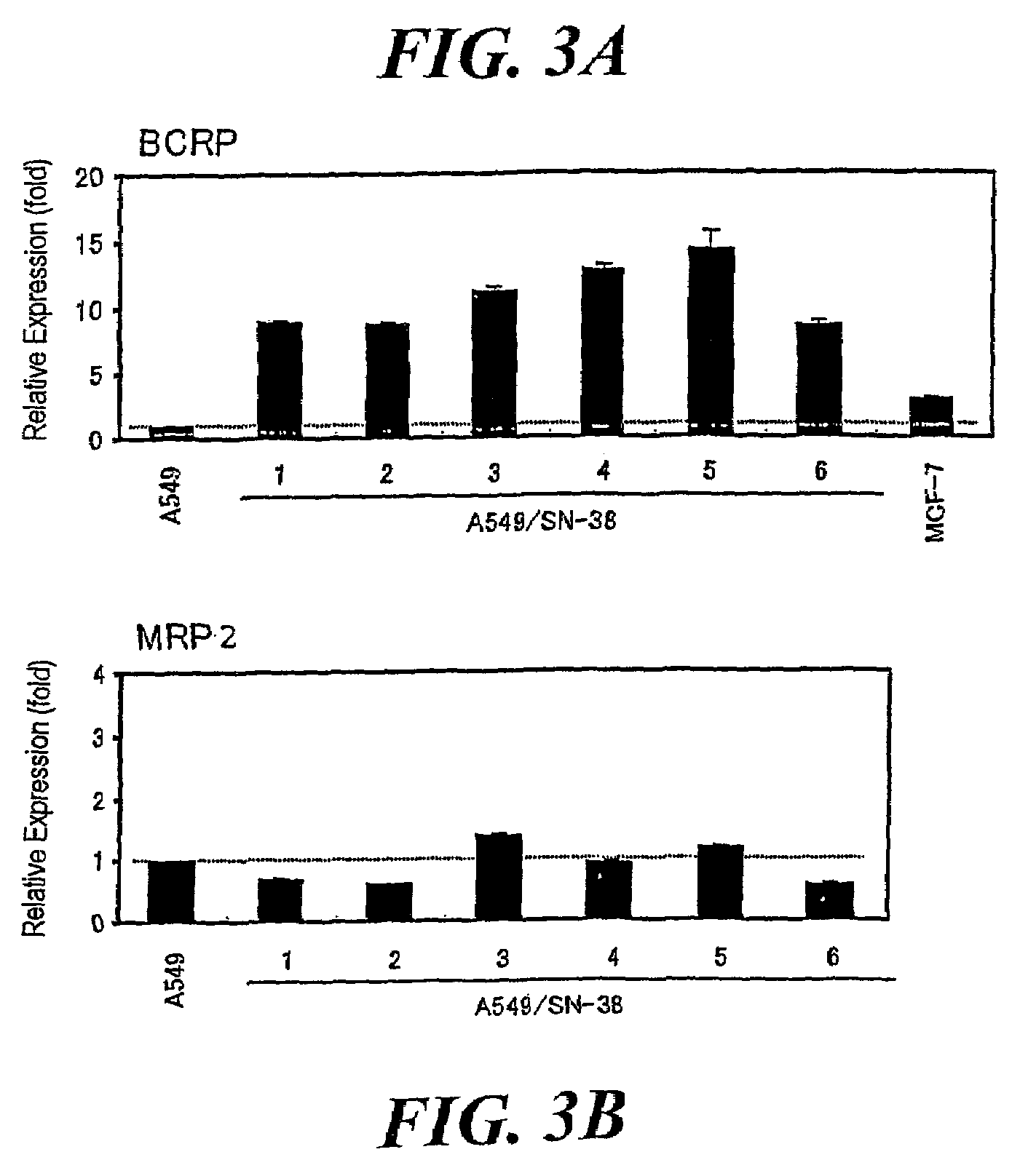Breast cancer resistance protein (BCRP) inhibitor
a cancer resistance protein and inhibitor technology, applied in the direction of biocide, drug composition, active ingredients of phosphorous compounds, etc., can solve the problems of bcrp-inhibiting effect or anticancer-drug-resistance-overcoming effect of diphenylacrylonitrile derivatives that have not yet been known, and achieve the effect of inhibiting bcrp
- Summary
- Abstract
- Description
- Claims
- Application Information
AI Technical Summary
Benefits of technology
Problems solved by technology
Method used
Image
Examples
example 1
Production of Diphenylacrylonitrile Derivative
[0129]When a diphenylacrylonitrile derivative was synthesized from a raw material having a hydroxyl group (a benzaldehyde derivative or a benzyl cyanide derivative), firstly, the hydroxyl group was protected through the below-described protection process; subsequently, the resultant product was subjected to a condensation process; and finally, the protective group was removed through a deprotection process. When a raw material having no hydroxyl group was employed, the raw material was subjected to the condensation process without being subjected to the protection process.
(Production process 1) Process for Protecting Hydroxyl Group of a Benzaldehyde Derivative or Benzyl Cyanide Derivative
[0130]
[0131]In a reaction vessel, a benzaldehyde derivative or benzyl cyanide derivative having a hydroxyl group was dissolved in tetrahydrofuran under stirring. The reaction vessel was ice-cooled, and sodium hydride (content: 60%, suspended in oil) was ...
example 2
Establishment of SN-38-resistant A549 Cell Line
[0295]Human non-small cell lung cancer A549 cell line was subcultured at 5% CO2 and 37° C. by use of a Ham's F-12 medium containing 10% FBS, 100 U / mL of penicillin, and 100 μg / mL of streptomycin (10% FBS / Ham's F-12). SN-38-resistant A549 cell lines were selected by subculturing the A549 cell line in a medium for two months while the concentration of SN-38 contained in the medium was increased in a stepwise manner (4 to 10 ng / mL). Subsequently, the resultant SN-38-resistant A549 cell lines were subjected to cloning by means of limiting dilution, to thereby establish six cloned SN-38-resistant A549 cell lines (A549 / SN-38-1 to 6).
example 3
Anticancer Drug Sensitivity Test of A549 / SN-38 Cell Line
[0296]The A549 cell line or each of the A549 / SN-38-1 to 6 was suspended in 10% FBS / Ham's F-12, and the resultant suspension was inoculated into a 96-well microplate, followed by culturing at 5% CO2 and 37° C. overnight. Thereafter, a solution of an anticancer drug in 10% FBS / Ham's F-12 (50 μL) was added to each of the wells, followed by culturing at 5% CO2 and 37° C. for 48 hours. After completion of culturing, the number of viable cells was counted by use of a viable cell counting reagent [TetraColor ONE (trade name), product of Seikagaku Corporation] according to the attached instruction manual. Table 2 and FIG. 1 show the sensitivities of the A549 cell line and the six A549 / SN-38 cell lines to various anticancer drugs. “IC50” corresponds to the concentration of an anticancer drug required for 50% inhibition of cell growth. “Relative resistance value” is obtained by dividing the IC50 for an A549 / SN-38 cell line by the IC50 fo...
PUM
| Property | Measurement | Unit |
|---|---|---|
| concentration | aaaaa | aaaaa |
| concentration | aaaaa | aaaaa |
| emission wavelength | aaaaa | aaaaa |
Abstract
Description
Claims
Application Information
 Login to View More
Login to View More - R&D
- Intellectual Property
- Life Sciences
- Materials
- Tech Scout
- Unparalleled Data Quality
- Higher Quality Content
- 60% Fewer Hallucinations
Browse by: Latest US Patents, China's latest patents, Technical Efficacy Thesaurus, Application Domain, Technology Topic, Popular Technical Reports.
© 2025 PatSnap. All rights reserved.Legal|Privacy policy|Modern Slavery Act Transparency Statement|Sitemap|About US| Contact US: help@patsnap.com



